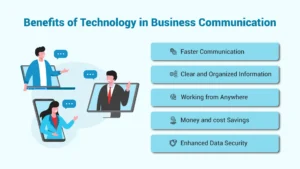Client: A mid-sized financial services firm
The client is a reputable financial services firm serving both corporate and individual clients. With a mid-sized team and growing client base, the firm manages sensitive financial data daily. Protecting this data is not just a matter of operational efficiency but also a legal and reputational necessity. In an industry where trust and security are paramount, even a minor vulnerability can have long-lasting consequences.

The Challenge
The client was experiencing frequent security breaches and data vulnerabilities due to outdated security protocols and insufficient monitoring. These issues threatened the firm’s reputation and led to compliance risks.
Frequent Security Breaches
Cyberattacks had become a persistent problem for the firm. Phishing emails, unauthorized access attempts, and malware infections were recurring issues. Each incident not only disrupted operations but also increased the risk of data exposure, which could have led to significant financial penalties and client distrust.
Outdated Security Protocols
The firm’s existing security measures were several years old and lacked the sophistication required to combat modern threats. Legacy firewalls, weak authentication methods, and unpatched systems left the network exposed to vulnerabilities that cybercriminals could easily exploit.
Compliance Risks in a Regulated Industry
Operating within the financial sector means strict regulatory requirements, such as PCI DSS, FINRA, and other industry-specific standards. Non-compliance could result in fines, sanctions, and damage to client relationships. Without proper monitoring and reporting, the firm struggled to demonstrate compliance consistently.
Reputation on the Line
For financial services, trust is everything. Repeated security incidents were eroding confidence among clients. The leadership team knew that unless they acted swiftly, they risked losing clients to competitors with stronger security postures.
The Solution
Our managed services team conducted a thorough assessment of the client’s network, identifying key vulnerabilities. We implemented advanced cybersecurity solutions, including next-generation firewalls, intrusion detection systems, and continuous monitoring. Additionally, we provided employee training to ensure adherence to security best practices.
Comprehensive Security Assessment
The first step was a full-scale evaluation of the firm’s IT infrastructure. This included penetration testing, vulnerability scanning, and reviewing existing security policies. By identifying weak points, we created a roadmap for strengthening their defenses.
Advanced Cybersecurity Tools
We deployed next-generation firewalls capable of deep packet inspection, intrusion detection systems to identify suspicious activity, and intrusion prevention mechanisms to block threats in real time. Together, these solutions created multiple layers of defense against cyberattacks.
Continuous Monitoring and Rapid Response
Round-the-clock monitoring was introduced to ensure immediate detection of anomalies. With real-time alerts, our security operations center could respond instantly to any attempted breach. This proactive approach dramatically reduced the risk of data loss.
Employee Training and Awareness
Human error is often the weakest link in cybersecurity. To address this, we implemented a robust training program covering phishing awareness, password hygiene, and secure data handling. Regular workshops and simulated attacks reinforced best practices among employees.
Policy Updates and Compliance Alignment
We helped the client update their internal security policies to align with industry standards. Regular compliance audits and automated reporting tools provided transparency, ensuring the firm could meet regulatory requirements without unnecessary stress.
The Result
Within three months, the firm reported a 95% reduction in security incidents. Their network is now fully compliant with industry standards, and the client has peace of mind knowing their sensitive data is protected.
Significant Reduction in Breaches
The drastic 95% drop in security incidents speaks to the effectiveness of the new infrastructure and monitoring tools. What once was a recurring issue became a rare occurrence, saving the firm both time and resources.
Compliance Achieved with Confidence
With updated policies and advanced security measures in place, the firm achieved compliance across multiple regulatory frameworks. This not only reduced the risk of fines but also gave them a competitive edge in attracting new clients who prioritize data security.
Improved Client Trust
Restoring trust was a key objective, and the results were evident. Clients now had confidence that their sensitive financial data was handled with the utmost security. Positive feedback and renewed contracts reflected the regained credibility.
Empowered Workforce
The training initiatives empowered employees to recognize and prevent threats on their own. From identifying phishing attempts to practicing better password management, staff became active participants in the company’s cybersecurity culture.
Don’t Miss: Streamlining IT Operations for a Healthcare Provider – See the Full Case Study!
Why Network Security Is Critical in Financial Services
Protecting Sensitive Data
Financial institutions handle vast amounts of sensitive data, including personal identification details, account numbers, and transaction histories. Protecting this data is critical not only for compliance but also for maintaining client loyalty.
Meeting Regulatory Requirements
The financial sector is one of the most heavily regulated industries. Network security is not optional—it is a legal requirement. Managed security services help firms stay compliant while reducing the burden of audits and inspections.
Safeguarding Reputation
Reputation is currency in financial services. A single data breach can tarnish a firm’s image and lead to client attrition. Investing in robust network security protects the brand and fosters long-term client relationships.
Preventing Financial Loss
Cyberattacks can result in direct financial losses through fraud, theft, or ransom payments. Indirect losses, such as legal fees and downtime, can be equally damaging. Proactive security measures protect firms from these costly scenarios.
Lessons Learned from This Transformation
- Cybersecurity Must Be Proactive – Waiting for an incident before acting can be devastating. Continuous monitoring and proactive defenses are essential.
- Employee Awareness Is Key – Technology alone cannot stop cyber threats; informed employees are just as important in maintaining security.
- Compliance Is More Than a Checkbox – Aligning with industry standards not only avoids penalties but also builds client trust.
- Layered Security Works Best – Combining firewalls, monitoring, detection, and training creates a comprehensive shield against modern threats.
Conclusion
This case study demonstrates how managed network security services can transform the operations of a financial services firm. By addressing outdated protocols, implementing advanced tools, and empowering staff through training, we helped the client achieve a safer, more compliant, and more efficient IT environment.
For financial firms facing similar challenges, this story underscores the importance of prioritizing cybersecurity as a strategic investment. The right managed services partner not only safeguards sensitive data but also strengthens compliance, restores trust, and positions the organization for sustainable growth.









